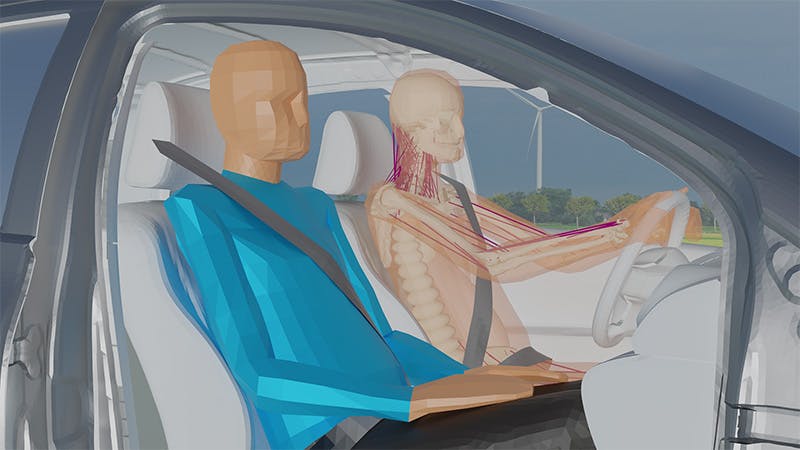Integrated safety systems are a combination of passive and active safety systems that aim to improve pedestrian and occupant safety. While these systems offer a multitude of possibilities, they also come with some challenges. The complexity of safety systems coupled with the required number of variables means that the setup of such simulations can be a daunting and lengthy task. If tackled incorrectly, this can add much frustration and time to the simulation setup process. Virtual integrated safety simulations are necessary to fine-tune these safety systems and resolve complexities.
This webinar is an introduction to the Integrated Safety Application and will show you how you can save time, improve your simulation runs, and reduce user input errors.
Why now?
Current automotive safety test protocols dictate separate safety systems requirements for passive and active systems. However, Integrated Safety is becoming more prominent for the improvement of pedestrian and occupant safety. New regulations such as those outlined for 2022, by the EU in their General Safety Regulation require Lane Departure Warnings, Driver Drowsiness Recognition, and Advanced Emergency Braking Systems, showing that regulators desire more encompassing systems.
In this webinar on integrated safety system development for pedestrian and occupant safety, you will get:
- An overview of Integrated Safety
- Introduction to Simcenter Madymo Integrated Safety Application
- Why you should use the application
- How you can use the application
- Its key features
- How it can save you time and improve your efficiency
Who is the Integrated Safety Webinar for?
The Integrated Safety webinar is designed for Safety and Design Engineers who are currently using or contemplating using Simcenter Madymo and its Safety Applications.
Development of a new generation of safety systems for autonomous vehicles
With the development of autonomous driving cars, shuttles, buses, and pods, we also need to consider redesigning the vehicle safety systems. Newly proposed seating positions for autonomous vehicles invalidate traditional safety systems, and vehicle occupant safety is seriously in jeopardy unless these systems are redesigned.
Siemens offers solutions that help to design next-generation safety systems for autonomous vehicles. So, in the event of a crash scenario, you can rely on a safety system that is validated based on simulating hundreds of thousands of scenarios. These simulations analyze and optimize the effect of alternative seating positioning on occupants and are executed in a virtual environment. They enable occupant and pedestrian injury risk prediction in crash scenarios, delivering fast and accurate simulation, reducing time-to-market, and cutting costs.
